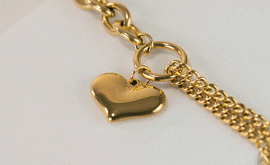Troy Ounce vs Ounce
Newcomers to investing and collecting precious metals may be surprised to find that a different unit of measurement is used for gold bullion and silver. The troy ounce is different to the regular ounce used to measure most goods, including food. In this blog, you will find out more about the troy ounce, the standardised measurement around the world for gold and silver.
What is a Troy Ounce?
A troy ounce (Oz) is the unit of measurement for precious metals such as gold and silver. This is something all buyers and sellers of precious metals come to learn quite quickly when managing their portfolio. Most other goods including grains and sugar are measured with the traditional ‘avoirdupois’ system of ounces.
What Is the Difference Between an Ounce and a Troy Ounce?
A single troy ounce has 2.75 grams more than a regular avoirdupois ounce. If this was placed on a regular scale, it would be around 10% heavier than the standard unit of measure. In exact terms, one ounce is 28.35 grams whereas a troy ounce is 31.1 grams. 1kg is the equivalent of 32.1507 troy ounces.
Why is a Troy Ounce Important?
When purchasing a one-ounce gold coin and measuring it against a standard ounce scale, you will find it’s 10% heavier. The two measurements aren’t comparable and must be separate. The troy ounce measurement system may seem a little more complicated at first, but it’s vital that precious metals have a separate unit of measurement to ensure purity standards.
Understanding that a troy ounce is different from a regular ounce, helps you buy in confidence from reputable precious metals dealers, and it is always a good idea to ensure that the dealer you buy from lists the item’s weight in troy ounces, or the corresponding weight in grams, as opposed to just ounces.
History of the Troy Ounce
It’s not clear exactly when and where the troy weight system was created, but most attribute it to the trade market of Troyes in France. Merchants from all over the world would buy and sell goods in Troyes, including precious metals. Various places in Europe adopted similar versions of the troy ounce, but the French model is the one believed to be closest to the measurement system we use today.
It’s argued by some that its origins go back to Roman times and its monetary system. They used bronze bars as currency, and a single bar was known as an “aes grave”. One-twelfth of that was known as an “uncia” or ounce. Nowadays, a troy ounce is a twelfth of a troy pound.
Troy Ounce in the UK
Prior to the introduction of the metric system, French-born King Henry II of England changed the British coinage system to reflect the troy system of the French. The system has been adjusted periodically throughout history, but the troy ounce became the standard gold and silver measurement in Britain. The United States, meanwhile, didn’t adopt the system until 1828.
Just like the traders in Troyes, buyers and sellers need an accepted standardised form of measurement for precious metals. In Britain today, the troy ounce is still the unit of measure used for the buying and selling of gold and silver.
You can trade all your precious metals with Atkinsons Bullion, confident knowing that we’re following the standardised world measurement for your gold bars, gold coins, silver coins and silver bars so you get the best deal. Remember to always check the latest gold and silver prices by the troy ounce, which is regularly updated in the top banner of the site.
For any queries about troy ounces, get in touch with us.
Why Join Our Mailing List?
By signing up, you'll gain access to exclusive updates, early announcements, and tailored insights into the world of bullion and precious metals.

Latest Updates On Bullion

New Releases

Special Offers

Market Analysis
This blog represents one person’s opinion only. Please note, gold and silver prices may go down as well as up. Atkinsons Bullion & Coins accepts no responsibility for any losses based on information we have provided. We do not offer investment advice. Please carry out your own research before making an investment decision.












